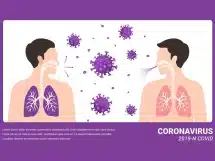As India continues to battle against COVID-19 pandemic, predictions about the likely cases in seven high caseload states namely Maharashtra, Tamil Nadu, Gujarat, Rajasthan, Delhi, Madhya Pradesh and Uttar Pradesh using Autoregressive Integrated Moving Average (ARIMA) model have been made.
By Dr. Rajna Mishra
The world is now at a standstill owing to coronavirus disease (COVID-19) pandemic that has been spreading at an alarming speed and posing not only health threats but threats to the global economy as well. As of 14 May 2020, the pandemic has infected 4,347,015 people globally and 78,003 across India.
As India’s battle continues with the COVID-19 pandemic, an attempt has been made to forecast the likely cases in India and 7 high caseload states namely Maharashtra, Tamil Nadu, Gujarat, Rajasthan, Delhi, Madhya Pradesh and Uttar Pradesh using Autoregressive Integrated Moving Average (ARIMA) model. Accessing data from the Ministry of Health and Family Welfare (MoHFW) for the time period 10th March 2020 to 12 May 2020, this time series model predicts the likely COVID-19 cases for the next one month.
Weekly forecasts of COVID-19 cases and their lower and upper limits with 95% confidence interval (CI) for the country and states of Maharashtra, Tamil Nadu, Gujarat, Delhi, Rajasthan, MP, and UP are provided in the table below.
Table 1: Forecasts of the number of cases till June 2020

As per the estimates, India will cross the figure of one lakh active case on 16 May. It will almost double (to around 2.5 Lakh) figure of active cases on 20th June based on time series forecast. Among the states, Maharashtra will continue to have the highest number of cases, followed by Tamil Nadu, Gujarat, Delhi, Rajasthan, Madhya Pradesh, and Uttar Pradesh respectively. As per the estimates, cases in Maharashtra are likely to increase more than fourfold and in Tamil Nadu by more than threefold between 16th May 2020 and 20th June 2020.

Since, the first confirmed case found in India on 30th January 2020, to date, the number of cases has increased exponentially to 74292 cases as of 13th May 2020. The recovery rate of the infected increased to 31 percent and Case-Fatality is 3.3 percent.
However, a lot will still depend on how much testing is being done by the states. With widespread testing, the number of cases detected positive will rise. As per WHO, the doubling time in the country seems to be about 11 days which is a positive indication revealing opportunities for reduced transmission. However, to continue slowing the spread of the virus, the focus should continue to be on active case finding, isolation, contact tracing, quarantine and social distancing as this would have an immediate impact on interrupting transmission. The focus should also be on the restricting movement of people as this would reduce the exposure of people coming into contact with a person with the disease and also reducing urban to rural transmission. With relaxations coming in, outbreaks in some areas are inevitable, but state governments are to ensure organized timely responses including efficient containment measures and clinical management of positive cases and involvement of PRIs and community level organizations including NGOs and SHGs for awareness generation, contact tracing, etc. The success to curb the rise will depend on the containment strategies taken up by the respective state governments and strengthening the strategic pillar approach of ‘Detect’,’ Test’ ‘Isolate’, and ‘Treat’.
The forecast has been compiled by Dr. Rajna Mishra, Dr. Ajay Kumar Mishra, and Mr. Karthick Radhakrishnan. Dr. Rajna Mishra is with the Public Health Foundation of India (PHFI) and Dr. Ajay Kumar Mishra and Karthick Radhakrishnan with Ecorys India. The views expressed are personal and do not reflect the views of the organisation.

















